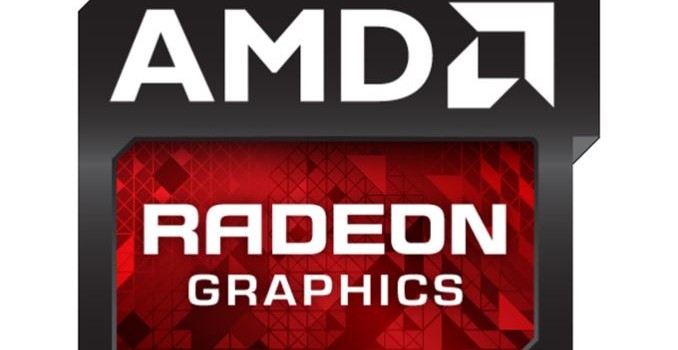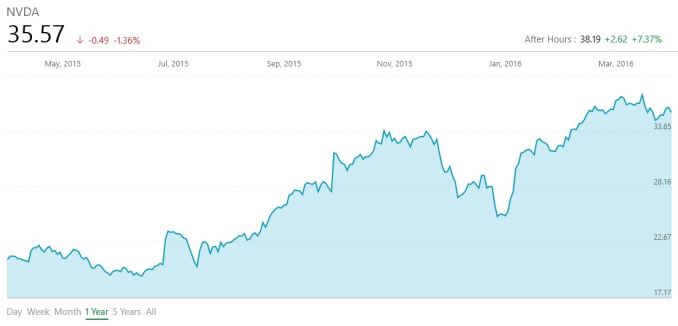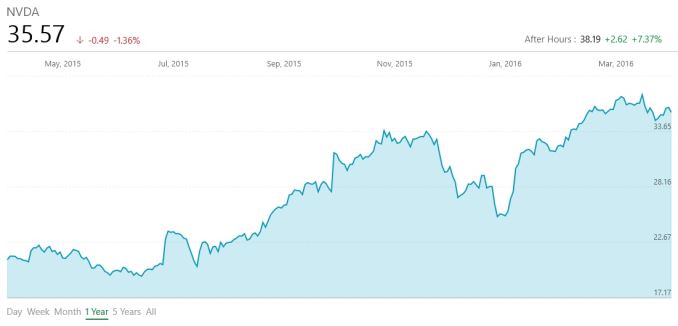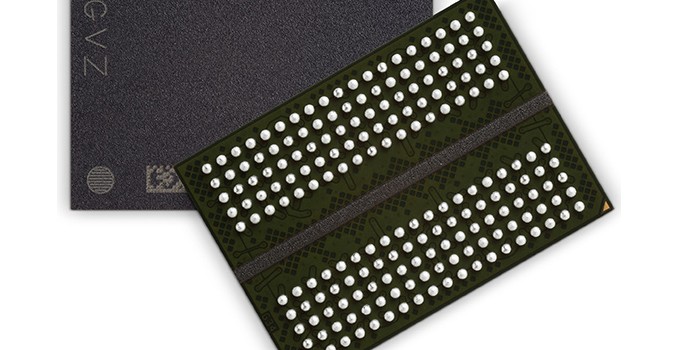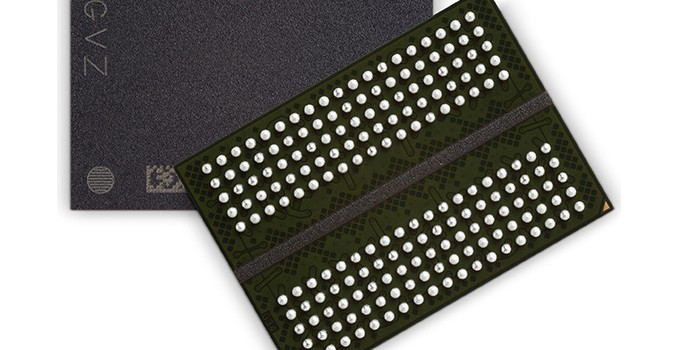
Much of the PC industry has been reporting less than strong results, with declines in PC unit sales leading to lower earnings for many of the big players such as Intel, AMD, and even Apple. NVIDIA has bucked this trend though with a strong quarter to start their fiscal year 2017. Revenue for the quarter was $1.305 billion, up 13% from Q1 FY 2016, with growth in NVIDIA’s GPU business, datacenter, automotive, and professional visualization all showing strong sales. Gross margin for the quarter was 57.5%, up 0.8% from a year ago. Operating income was up 39% to $245 million, and net income came in up 46% to $196 million. This resulted in earnings per share of $0.33.
| NVIDIA Q1 2017 Financial Results (GAAP) |
| |
Q1’2017 |
Q4’2016 |
Q1’2016 |
Q/Q |
Y/Y |
| Revenue (in millions USD) |
$1305 |
$1401 |
$1151 |
-7% |
+13% |
| Gross Margin |
57.5% |
56.5% |
56.7% |
+1.0% |
+0.8% |
| Operating Income (in millions USD) |
$245 |
$252 |
$176 |
-3% |
+39% |
| Net Income |
$196 |
$207 |
$134 |
-5% |
+46% |
| EPS |
$0.33 |
$0.35 |
$0.24 |
-6% |
+38% |
NVIDIA also reports Non-GAAP results, which exclude stock based compensation, warranty charges, restructuring fees, and other fees. The Non-GAAP results had revenue of $1.305 billion, which is up 13%. Gross margin was 58.6%, which is up 1.7%. Operating income was up 39% to $322 million, and net income was up 41% to $263 million. Non-GAAP earnings per share were $0.46.
| NVIDIA Q1 2017 Financial Results (Non-GAAP) |
| |
Q1’2017 |
Q4’2016 |
Q1’2016 |
Q/Q |
Y/Y |
| Revenue (in millions USD) |
$1305 |
$1401 |
$1151 |
-7% |
+13% |
| Gross Margin |
58.6% |
57.2% |
56.9% |
+1.4% |
+1.7% |
| Operating Income (in millions USD) |
$322 |
$356 |
$231 |
-10% |
+39% |
| Net Income |
$263 |
$297 |
$187 |
-11% |
+41% |
| EPS |
$0.46 |
$0.52 |
$0.33 |
-12% |
+39% |
GPUs accounted for most of the revenue, with GPU revenue coming in at $1.08 billion for the quarter. This is a gain of 15% year-over-year, driven by strong growth in the GeForce lineup. NVIDIA has recently announced their latest Pascal architecture with the GTX 1080 and GTX 1070, with cards coming soon, so I would expect strong sales to continue. Tegra processor revenue for the quarter was $160 million, up 10% compared to Q1 2016, thanks to continued growth in Tegra automotive.
Gaming platform revenue was up 17% to $687 million, consistent with the strong growth in PC gaming compared to the rest of the PC market. Quadro revenue, filed under Professional Visualization, was up 4% to $189 million.
Datacenter revenue which includes Tesla and GRID results were a record $143 million for the quarter, up 63% from a year ago, driven by demand for GPU acceleration for deep learning.
Automotive revenue was $113 million of the $160 million for Tegra, up 47% year-over-year. It appears that NVIDIA made the right call with Tegra by mostly abandoning the mobile market where competition is pretty fierce, and they’ve really gained a good diversified foothold in the automotive sector where higher TDPs can let them drive larger GPUs.
Finally, the licensing deal with Intel, which is going to end soon, accounted for $66 million in revenue.
| NVIDIA Quarterly Revenue Comparison (GAAP) |
| In millions |
Q1’2017 |
Q4’2016 |
Q1’2016 |
Q/Q |
Y/Y |
| GPU |
$1079 |
$1178 |
$940 |
-8% |
+15% |
| Tegra Processor |
$160 |
$157 |
$145 |
+2% |
+10% |
| Other |
$66 |
$66 |
$66 |
flat |
flat |
NVIDIA has had a pretty successful run since the introduction of their Maxwell products, and these results are all prior to Pascal even coming on the market in a consumer card. NVIDIA’s outlook for Q2 is revenue of $1.35 billion plus or minus 2%, and GAAP gross margin of 57.7%, plus or minus 0.5%.
Source: NVIDIA Investor Relations



